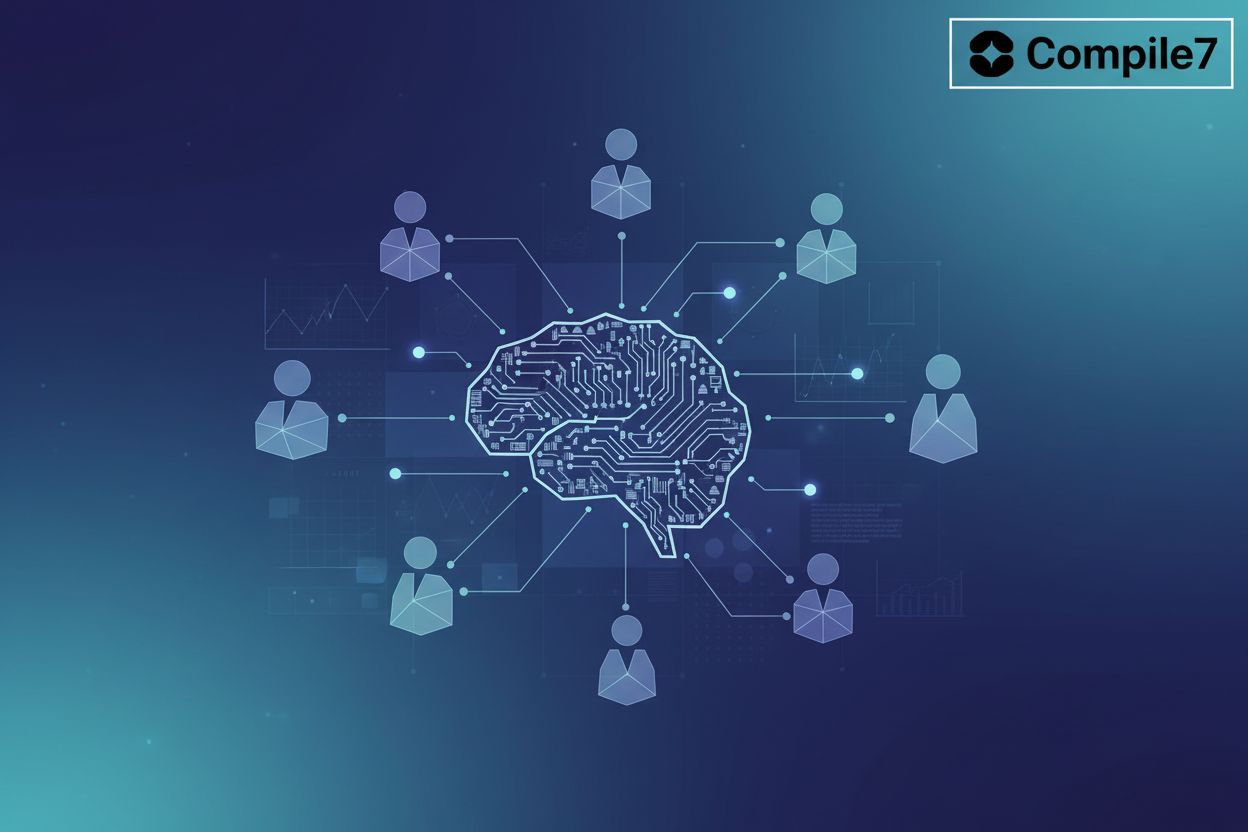Navigating Ethical Considerations in AI Development: A Guide for Business Leaders
Understanding the Ethical Landscape of AI
Did you know that ai systems used in hiring can unintentionally discriminate against certain groups? Navigating the ethical landscape of ai is crucial for business leaders to ensure responsible innovation.
ai's increasing role in business and society means we need ethical guidelines more than ever. As Capitol Technology University notes, ongoing debates about ai's control and power dynamics highlight the need to address ethical challenges now.
Unethical ai can seriously hurt your company. It can damage your reputation, lead to legal problems, and make customers lose trust.
Thinking about ethics early on can help your company be more innovative and get ahead of the competition. By embedding ethics into your ai planning and deployment, you can proactively address challenges rather than scrambling to fix problems after they arise, according to PMI.
Fairness: ai systems should not discriminate. For example, ai used in finance must avoid bias in lending practices.
Transparency: It's important to understand how ai makes decisions. "Black box" ai systems can be problematic in healthcare, where understanding the reasoning behind a diagnosis is crucial, as noted by Capitol Technology University.
Accountability: Someone needs to be responsible for what ai does. If an autonomous vehicle causes an accident, who is held accountable?
Privacy: User data must be protected. Robust safeguards against data breaches and unauthorized access are essential, according to Keymakr.
Safety: ai systems must minimize risks. For example, ai used in manufacturing should prevent harm to workers.
Understanding these principles is just the first step. Next, we'll explore practical strategies for implementing these ethics in ai development.
Identifying and Mitigating Bias in AI Systems
ai systems can unintentionally perpetuate societal biases, leading to unfair or discriminatory outcomes. It's crucial for business leaders to understand how to identify and mitigate these biases to ensure responsible ai development.
ai systems learn from data, and if that data reflects existing societal biases, the ai will likely perpetuate them. This can happen in several ways:
- Historical data often reflects past prejudices. For example, if a hiring algorithm is trained on historical hiring data where women were underrepresented in leadership roles, it may learn to favor male candidates.
- Sampling bias occurs when the data used to train the ai is not representative of the population it will be used on.
- Algorithmic bias can arise from the design of the ai model itself. Even with unbiased data, the way an algorithm is structured can inadvertently lead to discriminatory outcomes.
- Human bias can creep in during data labeling and annotation. If the people labeling the data have unconscious biases, they may label data in a way that reinforces those biases.
Mitigating bias requires a multifaceted approach. Here are some effective strategies:
- Data augmentation involves adding synthetic data to balance out underrepresented groups. Re-sampling techniques can also help to even out the distribution of data.
- Bias detection algorithms can help identify and correct biases in ai models. These algorithms analyze the model's predictions to detect disparities across different groups.
- Fairness-aware machine learning methods incorporate fairness metrics directly into the model training process. This ensures that the model is optimized not only for accuracy but also for fairness.
- Diverse and representative datasets are essential for training ai systems that are fair and unbiased. This requires careful attention to data collection and curation.
ai bias can manifest in various real-world scenarios. For example, as Keymakr points out, facial recognition technology has shown higher error rates for women and people with darker skin tones. ai-powered hiring tools can also discriminate against certain groups if they are trained on biased historical data, as noted by Capitol Technology University.
It's important to remember that "ai doesn't work in a vacuum - it reflects our world," as Keymakr observes.
Mitigating bias is an ongoing process that requires continuous monitoring and evaluation. As the Project Management Institute notes, focusing on ethics early in ai planning and deployment helps address challenges proactively.
Next, we'll explore how to ensure transparency and explainability in ai systems.
Ensuring Transparency and Explainability in AI
Can you trust an ai if you don't know how it makes decisions? Ensuring transparency and explainability in ai is not just an ethical consideration; it's a business imperative.
Building trust and confidence in ai systems is paramount for user adoption. If users understand how an ai arrives at a decision, they are more likely to trust its output.
Facilitating accountability and auditability is crucial for regulatory compliance. Transparent ai systems allow for easier tracking and validation of decisions.
Improving decision-making by understanding ai reasoning can lead to better outcomes. Knowing why an ai made a certain prediction allows for refinement and improvement of the system.
Complying with regulatory requirements is increasingly important as governments implement ai-specific laws. As Apiumhub notes, the EU is leading the way with the Artificial Intelligence Law, which aims to ensure ai systems are secure, transparent, and non-discriminatory.
Rule-based systems and decision trees offer inherent explainability. These models make decisions based on predefined rules, making it easy to trace the logic.
Linear models and feature importance analysis allow for understanding the impact of each input variable. By examining the coefficients in a linear model, you can determine which features have the greatest influence on the outcome.
SHAP (SHapley Additive exPlanations) values provide a way to explain the output of any machine learning model. SHAP values quantify the contribution of each feature to the prediction. For a business leader, this means you can understand why an ai recommended a specific marketing campaign to a customer, helping to refine future strategies.
LIME (Local Interpretable Model-agnostic Explanations) focuses on explaining individual predictions. LIME approximates the complex model locally with a simpler, interpretable model. This can help a product manager debug an ai feature that's not performing as expected by pinpointing the factors influencing a specific user's experience.
Strategies for disclosing ai decision-making processes without revealing proprietary information are essential. You can provide high-level explanations without divulging the specifics of your algorithms.
Using anonymization and aggregation techniques can protect sensitive data.
Establishing clear communication channels with stakeholders about ai transparency efforts is important. Regular updates and open forums can help build trust and address concerns.
As ai systems become more complex, ensuring transparency is key. Next, we'll delve into strategies for ensuring data privacy in ai development.
Prioritizing Privacy and Data Protection in AI Development
In the realm of ai, safeguarding data isn't just about compliance; it's about building trust. Implementing robust privacy measures protects sensitive information and ensures ai systems are used responsibly.
Data privacy regulations like the General Data Protection Regulation (GDPR) and the California Consumer Privacy Act (CCPA) have reshaped how businesses handle personal data. For ai development, these regulations dictate stringent requirements for data consent, access, and deletion. Non-compliance can lead to hefty penalties, emphasizing the need for businesses to prioritize data protection.
- Data Consent: Organizations must obtain explicit consent from individuals before collecting and using their data for ai applications.
- Data Access and Deletion: Individuals have the right to access their data and request its deletion, requiring ai systems to accommodate these requests.
Several techniques can enhance data privacy while still allowing ai systems to function effectively. These methods range from anonymization to advanced cryptographic solutions.
- Anonymization and Pseudonymization: These techniques remove or replace identifying information to protect individual privacy. Anonymization, for instance, aims to make it impossible to re-identify individuals from the data.
- Differential Privacy: Adds statistical noise to data to prevent the identification of individual records while preserving data utility.
- Federated Learning: Trains ai models on decentralized devices or servers, minimizing the need to transfer raw data to a central location.
Creating a privacy-first culture within ai development teams is crucial for long-term success. This involves not only implementing technical measures but also fostering a mindset that prioritizes data protection at every stage of the ai lifecycle.
- Data Privacy Training: Regular training programs can educate ai developers about data privacy regulations and best practices.
- Data Governance Policies: Establishing clear data governance policies ensures that data is handled responsibly and ethically.
- Privacy Impact Assessments (PIAs): Conducting PIAs for all ai projects helps identify and mitigate potential privacy risks early on.
Prioritizing data privacy is essential for responsible ai development. By understanding and adhering to privacy regulations, employing advanced privacy-enhancing techniques, and fostering a privacy-first culture, businesses can build ai systems that are both innovative and trustworthy.
Next, we'll explore strategies for ensuring ai safety and preventing unintended harm.
Ensuring AI Safety and Preventing Unintended Harm
ai systems, especially those operating in critical areas, must be designed to be safe and to prevent unintended harm. This involves a proactive approach to identifying and mitigating potential risks.
- Risk Assessment: Before deploying an ai system, conduct thorough risk assessments to identify potential failure points and their consequences. This includes considering how the system might be misused or exploited.
- Fail-Safe Mechanisms: Implement robust fail-safe mechanisms that can halt or revert the ai system in case of unexpected behavior or critical errors. This is especially important for systems controlling physical processes or making high-stakes decisions.
- Adversarial Attacks: Be aware of adversarial attacks, where malicious actors try to trick ai systems into making incorrect decisions. Developing defenses against such attacks is crucial for maintaining system integrity.
- Ethical Implications of AI Failures: Understand the ethical implications of ai failures. For instance, an ai failure in a medical diagnosis system could have life-threatening consequences, requiring careful consideration of fallback procedures and human oversight.
- Continuous Monitoring and Updates: ai systems are not static. Continuous monitoring of their performance in real-world conditions is necessary to detect emerging risks and ensure that the system remains safe and effective over time. Regular updates based on monitoring data are essential.
By focusing on these aspects, businesses can significantly reduce the likelihood of unintended harm caused by their ai systems.
Next, we'll delve into establishing accountability and responsibility for ai systems.
Establishing Accountability and Responsibility for AI Systems
Establishing accountability in ai systems might seem complex, but it's essential for building trust and mitigating risks. Who is responsible when an ai algorithm makes a mistake?
Identifying key stakeholders is the first step. This includes developers, data scientists, ethicists, and legal counsel. Each role brings a unique perspective to the ethical considerations of ai.
Assigning clear responsibilities ensures that ethical decision-making is a collaborative effort. For example, ethicists can provide guidance on fairness and bias, while legal counsel ensures compliance with data privacy regulations. Establishing communication channels helps teams address ethical concerns promptly. A clearly defined escalation path ensures that issues are resolved efficiently.
Creating an internal ai ethics framework aligned with company values and industry best practices is crucial. This framework should provide guidance on ethical decision-making for ai teams. As Apiumhub notes, adhering to comprehensive ethical frameworks is crucial for responsible ai deployment. A framework might include sections on data handling, bias mitigation, and user recourse.
Incorporating ethical considerations into the ai development lifecycle helps address potential issues early on. This proactive approach ensures that ai systems are developed and deployed ethically.
Establishing regular ai auditing and monitoring processes is essential for detecting and addressing ethical issues. These processes help ensure that ai systems are fair, transparent, and accountable.
Using metrics and key performance indicators (KPIs) helps track ai performance and fairness. For instance, a KPI for fairness could be the difference in prediction accuracy across different demographic groups. Creating feedback mechanisms allows users to report ethical concerns. User feedback provides valuable insights into the real-world impact of ai systems.
By implementing these strategies, businesses can establish clear accountability and responsibility for their ai systems, fostering trust and ensuring ethical ai development.
Next, we'll explore future trends and challenges in ethical ai.
Future Trends and Challenges in Ethical AI
ai's future hinges on responsible innovation. What trends and challenges lie ahead?
- Emerging technologies like generative ai raise concerns about deepfakes and misuse. For businesses, this means understanding the potential for misinformation campaigns or the creation of synthetic content that could damage reputation or mislead customers. Proactive measures, like watermarking AI-generated content or implementing robust content moderation, will become increasingly important.
- Regulations and policies are crucial for shaping ethical ai development. As governments worldwide introduce new laws, businesses need to stay informed and adapt their practices. This could involve changes to data handling, algorithmic transparency, or even outright bans on certain ai applications. Understanding the evolving regulatory landscape is key to avoiding legal pitfalls.
- International cooperation on ethical standards is also essential. As ai transcends borders, global collaboration on ethical guidelines can prevent a fragmented approach and ensure a more consistent and responsible development trajectory. Businesses operating internationally will need to navigate these varying global expectations.
As ai evolves, education and diverse teams will drive ethical progress. This means investing in training for your employees and ensuring that your ai development teams reflect a wide range of perspectives and backgrounds.





